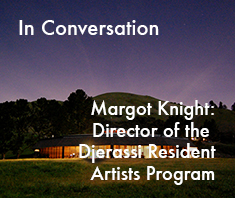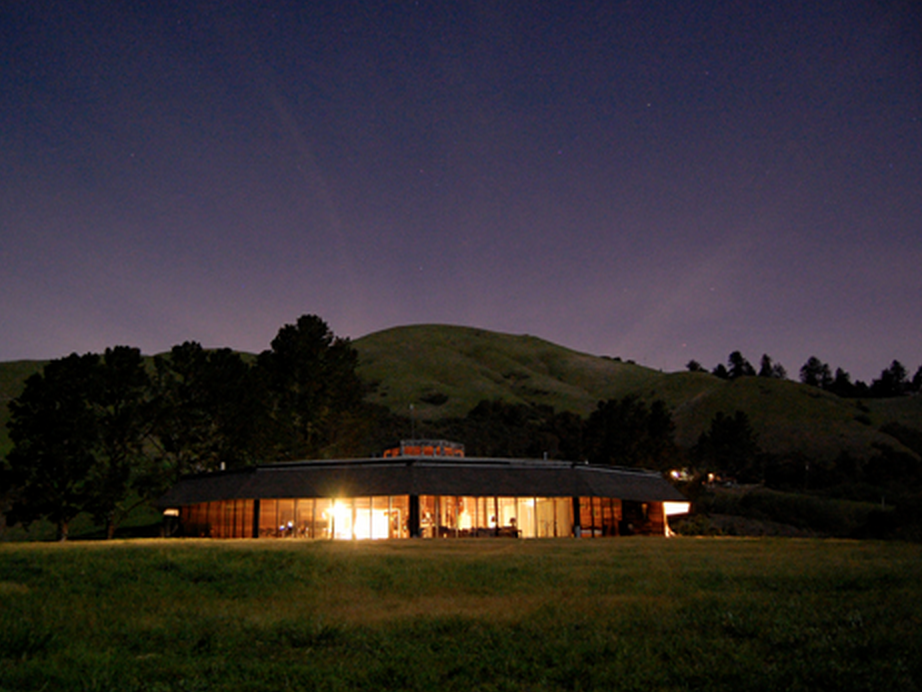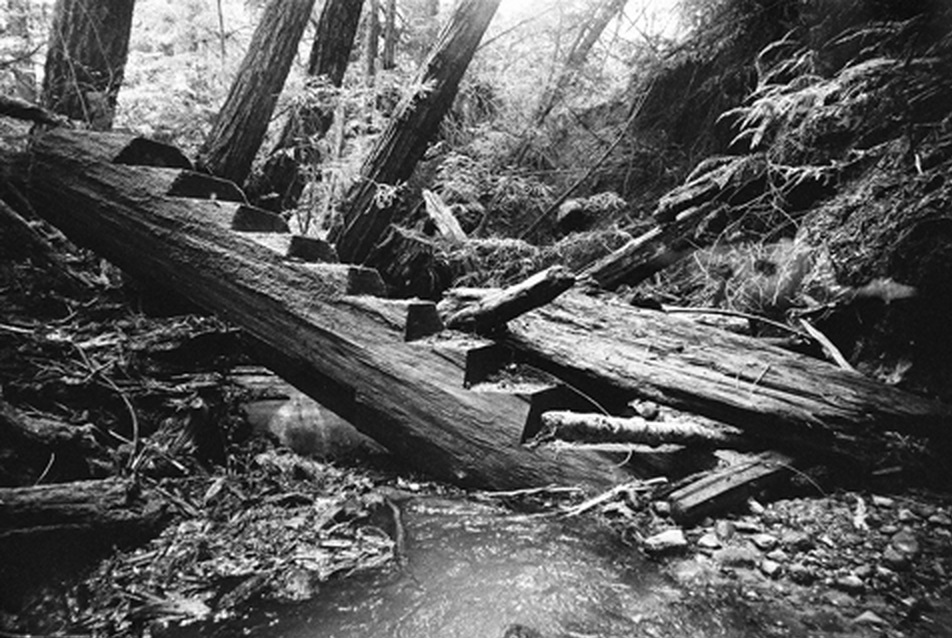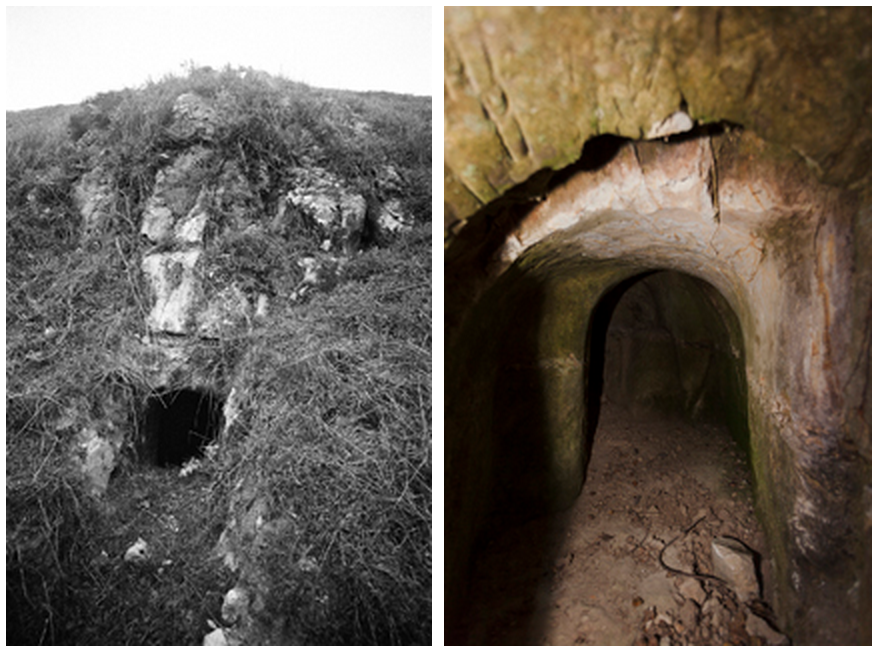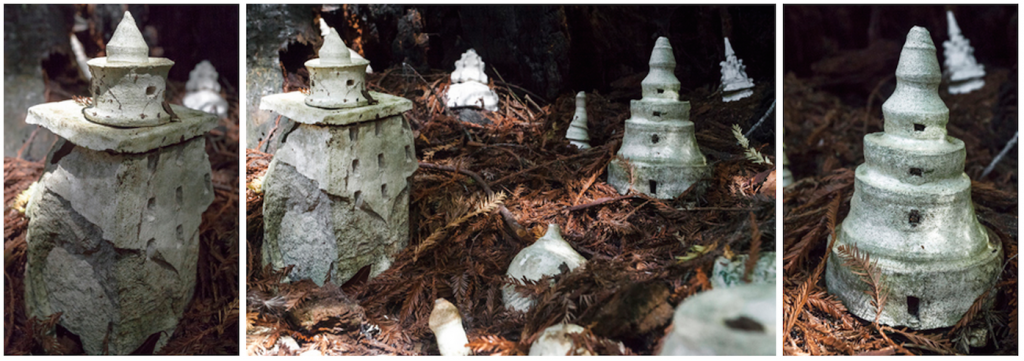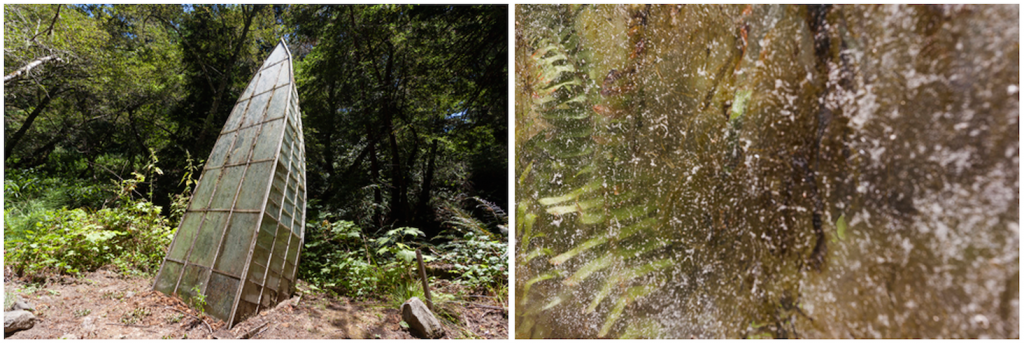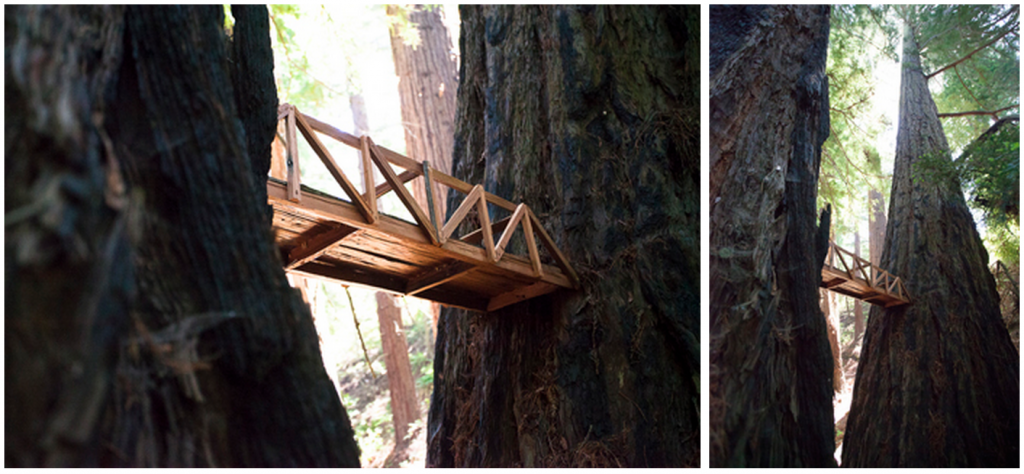In Conversation:
Terri Cohn with Margot Knight
Director of the Djerassi Resident Artists Program
“The ocean can’t be healthy if the headwaters aren’t healthy. Past John Roloff’s 1989 sculpture ‘Vanishing Ship,’ Harrington Creek flows to the Pacific. In the cultural ecosystem, residencies are headwaters for the arts.”
Why should residencies matter to the public? To artists? Residencies support artists for the creative beings they are. Residencies recognize artists as working professionals and, in the best of circumstances, value the creative process over the product.
The Djerassi Resident Artist Program was created in 1978 when young artist and poet Pamela Djerassi committed suicide. Her father, renowned chemist Carl Djerassi (and his partner-cum-wife Diane Middlebrook), set out to honor Pamela’s memory by creating a program that would nurture living artists. In 1979, the first resident—graphic artist Tamara Rikman—arrived from Jerusalem for a yearlong residency. Five women artists were beneficiaries of this remarkable opportunity in the first five years of the residency program.
This May, I had a conversation with Margot Knight, who has acted as director of the DRAP program since 2012. Our conversation, which follows, speaks to the resonance and benefits of this artist-centered model at this historic time, as the Djerassi program celebrates its 35th anniversary.
Terri Cohn: Djerassi is turning 35 this year. One of the great benefits it has offered artists, writers, dancers, musicians, composers, and choreographers from around world is the “gift of time.” Do you feel that the gift of time will remain the strongest aid a residency program can offer artists?
Margot Knight: We’ve hosted 1,700 artists, and have supported more than 2,200 residencies over 35 years. I believe that the infrastructure support we offer to artists is critical and often overlooked, especially because we have a funding environment right now that is almost “transactional.” The expectations of artists have raised monumental questions: What can artists do for us? Or what can artists do for society? Fix Detroit? Or fix people who are homeless? Or undereducated children? I think in order for artists to do those things—which many are very good at—they have to have time to nourish themselves. If they don’t do that, how can they go out into the world?
We offer the space for artists to just BE without any work/product requirement. It’s a critical part of being an artist.

Alissa Neglia, “Roots to Crown,” 2006. Courtesy of the artist and Djerassi Resident Artists Program.
TC: Do you think the absence of demand that DRAP creates for artists enhances or detracts from Djerassi’s relationship with the public?
MK: Communication of this need is imperative for the public. We have an open house once a year, and offer 12 free sculpture hikes a year. I will also do about 15 director’s hikes this year, and concentrate them in the interludes between residencies, so as to not disturb artists. The thing we are trying to do is bridge that gap, of the public not understanding this need.
We have just started to ask artists, “do you have an established social practice?” so we can draw a “bright ribbon” from that work to what they do at Djerassi, and let people know what they are doing at home in Cincinnati, or Burkina Faso, or Cuba, even though for that 30 days we’re not asking them to be directly and actively engaged in that relationship.
TC: That’s a great idea. It implies that artists would have some form of social practice.
MK: About half of them do. This year, when I went through the applications of the accepted artists, I saw that about half of them have substantive practices. Many teach, and others have a deeper community based practice. It’s not just artists alone on a mountaintop. It’s artists helping themselves so they can go out and interact with the world.
Every art form has its challenges around interactions with other people, in terms of collaboration. Choreographers have particular challenges, as do classical music composers. It’s a big problem with the way art is taught at the college level. There is not a range of career options given.
But artists don’t have to do anything in particular; they are going to be what they’re going to be. They’re going to have to come to some terms with it, especially the visual arts market, which is quite stratified. . . .Some artists who understand the education market make a very good living being in residence at schools across the country. They are in demand for working with kids. And there are artists who do the art fair markets, or the arts and crafts markets. . . .
It’s different for composers. We see it at Djerassi. We have the best mid-career artists you’ve never heard of! Extraordinary accomplishments! The visual arts are especially that way. A lot of regional visibility—well known in Germany or in Milwaukee. We’re also very well known by the top classical music producers. Each artistic discipline has its own bureaucracy and infrastructure.
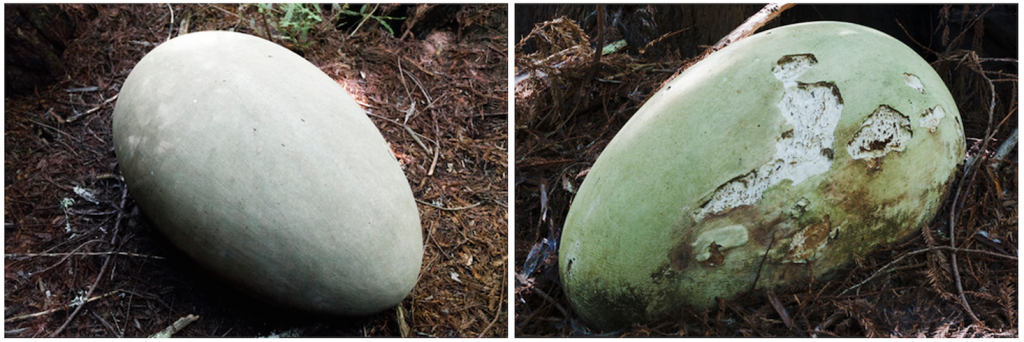
Sung Joon Hwang, “Skin of Dreams,” 1999. Courtesy of the artist and Djerassi Resident Artists Program.
TC: With all the visibility the program has around the world, it seems ironic that the program is so under-visible here in the Bay Area. Would you please talk about how many countries, states, and regions are represented?
MK: We really are well known in the artist community. We had 867 applicants for 2015, from which 75-80 artists will be chosen. Our rate is more competitive than Stanford! It’s remarkable, and that attests to the experience. There’s talk in the artist community about how transformative it is.
I think the reason we’re not as well known in the Bay Area is because it’s been deliberately kept a secret. There’s a perception that it’s a wholly owned subsidiary of its founder, Dr. Carl Djerassi. He did found it and manage it for the first 15 years, but for the last 20 years it’s been an independent non-profit. I think there’s also a certain preciousness born of its geographic isolation as well as the tenor of its directors. I am trying to balance the needs of resident artists with a higher community profile.
I do think we can retain that transformational experience for artists only if we are more well known in the Bay Area and supported by local organizations and individuals. 25% of our artists are from the Bay Area, and 20% are international. 51 countries have had artists visit and only one state (I believe it’s Arkansas) has not yet had a resident.
And, we are creating solid partnerships with Bay Area organizations. The de Young is part of that. This summer, in collaboration with LEONARDO, the Society for Arts, Sciences and Technology, we have invited scientists and artists to be in residence as part of a new program called Scientific Delirium Madness. We want to have presentations and collaborations with producing organizations—some of which are run by Djerassi alumni—and alumni gatherings. It’s incremental progress. It’s hard because we’re not part of the San Francisco crowd, so not eligible for funding from the San Francisco Arts Commission or other granting agencies in San Francisco. Yet, I think we’re incredibly important to creative life in San Francisco.
TC: I agree. The untold story of how much Djerassi has impacted artists who live in San Francisco.
MK: Yes, 500 or 600 residencies of the 2,200 artists are from the Bay Area. Every time I pass John Roloff’s ship in Yerba Buena Gardens, “Deep Gradient/Suspect Terrain,” I think of this. We have the original drawings—they were prototyped here—and have a prototype, “Vanishing Ship (Third State),” on the property; or Brian Goggin’s “Language of the Birds”—an installation of flying books on the corner of Broadway and Columbus in San Francisco, adjacent to City Lights Bookstore—inspired by the birds at Djerassi. All the untold stories.
TC: When I was thinking about this conversation, I was reminded of a show that featured artist Ray Beldner—a previous resident—at Catherine Clark Gallery years ago, which coincided with a Djerassi event at her gallery. There was an Oscar Wilde quote on the window, which was part of Ray’s project, “When bankers get together for dinner, they discuss Art. When artists get together for dinner, they discuss Money.”
There was also an interesting story, of the “kinsman redeemer,” which emerged from that show. The story refers to the Old Testament tale of the poor person, who was forced to sell part of his property or himself into slavery to pay his debts. The nearest of kin had the responsibility of stepping in to “redeem his kinsman’s lost opportunities.” This seems an interesting analogy with the legacy of being inheritors of a family situation, which exists at Djerassi.

The Diane Middlebrook Memorial Writers’ Residence, established 2011. Courtesy of Djerassi Resident Artists Program.
MK: There are multiple levels to that. We have a wonderful gift from the Djerassi family that set us in motion. Yet, it’s been a form of “tough love” he gave us. His endowment to us is the land and property and the gift of the idea, but we’re on our own to do it. The other thing that has to do with the kinsman redeemer is that we do have a system whereby a portion of our artists are funded by multiple benefactors and fellowship partners. It would be wonderful to eventually have all 80 artists supported in a way that does not make the artist any less than their benefactor.
That’s the tricky part of the legend. This is an exchange, where the person underwriting the artist must understand the value they bring to the table. “We are two equals wanting to make the world a better place. The asset I bring to the table is matched by the asset you bring to the table.” That’s the relationship I’d like to see between our fellowship benefactors, fellowship partners, and our artists.

William King, “Orpheus Coyote and Friends,” 1999. Courtesy of the artist and Djerassi Resident Artists Program.
TC: It seems that would be a beautiful way to create a new legacy for the program.
MK: We’re working on that. We have some donors who do get that. It’s hard sometimes to explain about artists unencumbered on a mountaintop with no work/product requirement and how that makes the world a better place. This is another reason why we’re trying to bring people to the property—to see that— so the partnerships are formed with a deeper understanding of the resonance of the program.
TC: Artists do need a place to be unencumbered, and there are very few programs that understand that requirements that some of them have—to participate in “open studios,” or readings, or performance events—deeply disrupts the creative experience. The gift of time that Djerassi offers is so critical to their moving forward. It’s absolutely essential.
MK: I met with a new group of artists yesterday. They all came with their “to do lists,” which I told them to forget. Many of them will do what they said they were going to do, and I guarantee that most will do something that they never imagined and will be all the happier for it.
TC: One question I always ask students on the first day of class is, “What is the burning question you’d like to ask?” What is the burning question I haven’t asked you, Margot?
MK: What can be done, among institutions, to create a stronger voice on behalf of individual artists? There has not been much success among individual artists coalescing around a single idea or an action plan or strategy that would allow them to have more value in society, and to be perceived as more critical to our everyday lives. . . . What are we doing to advance the value of individual artists? It’s a hard one, as often our own institutional issues about money or prominence take precedence.
TC: One of the things artists really do know how to do is “think outside the box.” A person brings everything they know to their thinking and work as an artist, in any discipline.
MK: We ask artists as a society to illuminate the human condition in ways we don’t see. Then we castigate them because they show us things we didn’t want to see! But that’s part of the social contract we have with artists. Illuminate the world for us! I’m busy! Artists are brave—they take more risks in a day than I take in a month. And I think we don’t treat artists very well . . . we have very love/hate relationships with them, yet artists advance the world in ways that we forget to remember! We need a little alarm clock to wake us up to that.
TC: What have I NOT asked you that you’d like to tell people about Djerassi?
MK: I’d like everyone to be aware, on a regular basis, of how much artists make their lives possible. Whether it is a car that was designed by an artist, or the ways in which visual artists, writers, and dancers, make their lives possible and more fully human. It’s not just a world of numbers and hard angles. Artists make our world better. That’s what I’d like to say—have the alarm clock about artists on so you’re aware of how much they matter. How much process matters.

Seyed Alavi, “Untitled Road Signs,” 1990. Courtesy of the artist and Djerassi Resident Artists Program.
Portions of the introduction and the opening quote are taken from the 2014 Djerassi Resident Artist Program brochure, and Margot Knight’s essay “Artist Residency Programs,” published in Common Ground, June 2013.
